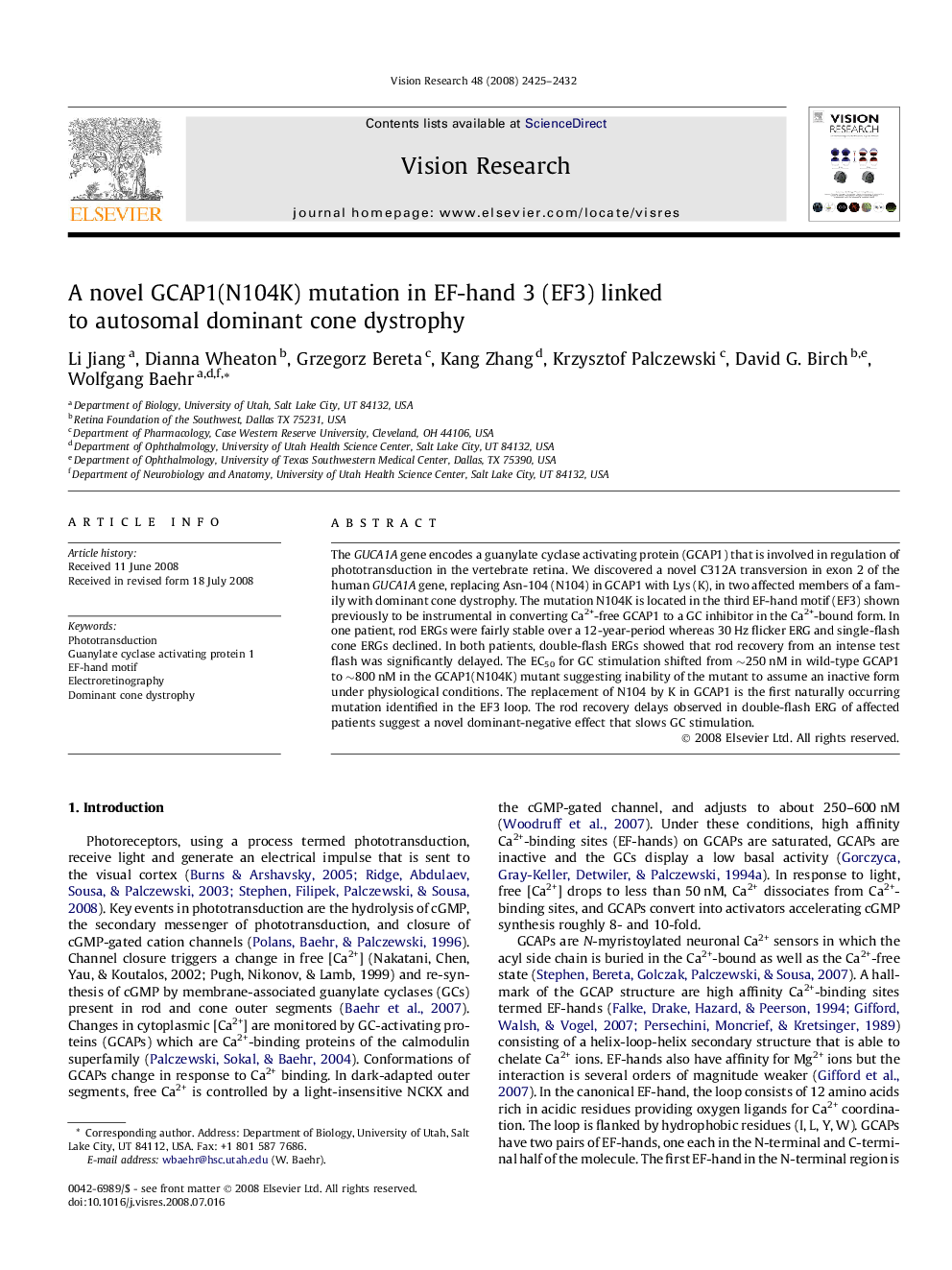| Article ID | Journal | Published Year | Pages | File Type |
|---|---|---|---|---|
| 4035492 | Vision Research | 2008 | 8 Pages |
The GUCA1A gene encodes a guanylate cyclase activating protein (GCAP1) that is involved in regulation of phototransduction in the vertebrate retina. We discovered a novel C312A transversion in exon 2 of the human GUCA1A gene, replacing Asn-104 (N104) in GCAP1 with Lys (K), in two affected members of a family with dominant cone dystrophy. The mutation N104K is located in the third EF-hand motif (EF3) shown previously to be instrumental in converting Ca2+-free GCAP1 to a GC inhibitor in the Ca2+-bound form. In one patient, rod ERGs were fairly stable over a 12-year-period whereas 30 Hz flicker ERG and single-flash cone ERGs declined. In both patients, double-flash ERGs showed that rod recovery from an intense test flash was significantly delayed. The EC50 for GC stimulation shifted from ∼250 nM in wild-type GCAP1 to ∼800 nM in the GCAP1(N104K) mutant suggesting inability of the mutant to assume an inactive form under physiological conditions. The replacement of N104 by K in GCAP1 is the first naturally occurring mutation identified in the EF3 loop. The rod recovery delays observed in double-flash ERG of affected patients suggest a novel dominant-negative effect that slows GC stimulation.
